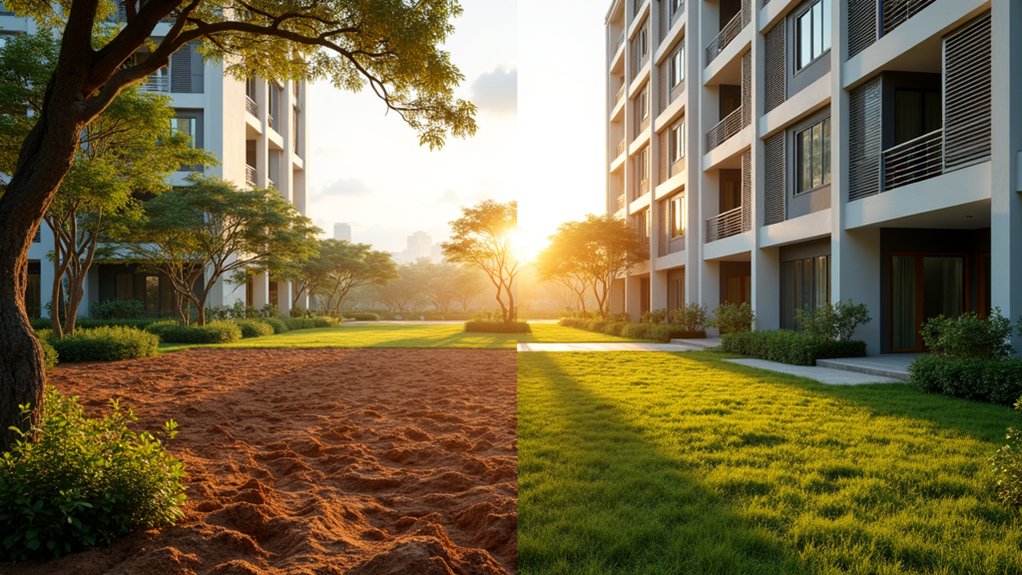As the residential real estate market enters 2025 with declining new-home construction activity, prospective buyers face a consequential decision between acquiring undeveloped land for custom development and purchasing a move-in-ready home. Each path presents distinct financial, temporal, and operational considerations.
Residential land demand fell nearly two-thirds from 2024 to 2025, with only 28% of land brokers reporting strong lot demand in Q2 2025 compared to 76% a year earlier. Yet, lot prices have paradoxically increased 4% to 6% annually despite this contraction, reflecting supply constraints imposed by regulatory barriers on developed, construction-ready parcels. Zoning reforms could increase available housing capacity by an estimated 40%, potentially alleviating these constraints and expanding development opportunities.
Residential land demand plummeted two-thirds while lot prices paradoxically climbed 4–6% annually, reflecting regulatory supply constraints on construction-ready parcels.
The financial landscape reveals a rare market inversion where typical new-construction homes sold for $407,200 in 2025, approximately $19,000 below existing home prices. Financing raw land presents elevated risk profiles, frequently requiring higher interest rates, substantial down payments, and construction loans with more stringent prerequisites than conventional mortgages. Construction loans typically require interest-only payments during the building phase before converting to traditional mortgages.
Undeveloped land minimizes holding costs and property tax obligations, however, providing financial advantages for buyers postponing immediate construction. Building costs fluctuate substantially based on labor availability, material pricing, location-specific factors, and customization requirements. Ongoing volatility from inflationary pressures and supply chain disruptions further complicate cost estimates.
Timeline considerations substantially differentiate these options. Move-in-ready homes enable occupancy within weeks to months following closing. Conversely, raw land development typically requires 12–24 months or longer, encompassing land preparation, permitting, construction phases, and regulatory inspections.
Construction timelines remain vulnerable to weather interruptions, labor shortages, and approval delays, frequently generating project overruns. Developers report escalating transaction cancellations in 2025 as consumers reassess long-term commitments and delivery expectations. Government supply pipeline initiatives demonstrate how strategic market interventions can help balance housing demand with development capacity.
Raw land development provides thorough control over layout, finishes, energy efficiency specifications, and smart home integration, incorporating contemporary materials and sustainable features from inception.
New-construction homes typically include builder warranties and compliance with current building codes. Existing homes occupy established neighborhoods featuring mature amenities, schools, and transportation infrastructure.
In contrast, raw land in prime locations remains scarce and may lack immediate service accessibility. Move-in-ready properties accommodate incremental renovations, distributing costs and disruptions progressively. However, aging systems and appliances may necessitate earlier replacement, offsetting initial acquisition savings and influencing long-term ownership economics.





